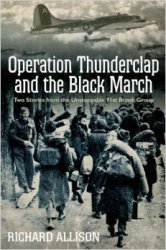The ethnic nationalists with religious affiliations continued to grow and diversify. For example, in 1906 the Young Men's Buddhist Association (YMBA) was formed. Partially modeled after the Young Men's Christian Association (YMCA) in the United States, this organization's initial goals were to reestablish Burmese cultural and religious values. However, during the decade following its establishment the organization became more political. For example, British dignitaries often refused to remove their shoes when entering sacred Buddhist temples. The YMBA viewed this practice as a direct insult, and they openly criticized the British. As their sentiments against British colonial rule grew the YMBA favored the establishment of an indigenous (a native multiethnic) Buddhist national government. By 1920 the YMBA began to fall apart. Political differences among its members led to infighting.
In 1921 the General Council of Burmese Associations (GCBA) was formed. The formation of this organization represented the first united multiethnic front to oppose British colonial rule. The
GCBA did not officially endorse Buddhism and it did not favor any single ethnic group. The primary goal of the organization was to build a large and forceful opposition to the British through the unification of internal Burmese factions.
The first action taken by the GCBA was an organized student strike. This strike, which took place at the newly founded University at Rangoon, started a tradition of student political activism. This and other related demonstrations resulted in a new constitution in 1921.
In 1923 a dyarchy (two-sided) government composed of British and Burmese nationalist officials was formed. Throughout the 1920's and 1930's this dyarchy government was the focus of bitter debates among many nationalists, ethnic populations, and government groups. Despite the fact that public elections were held in 1923,1925, and 1928, internal dissatisfaction with the dyarchy arrangement persisted.
In 1937 Myanmar obtained a "Reform Constitution," which granted the country a nationalist government free from Indian rule. However, the British maintained officials in key positions, thus maintaining a significant degree of control in Myanmar and, in reality, keeping the dyarchy intact.




 World History
World History









